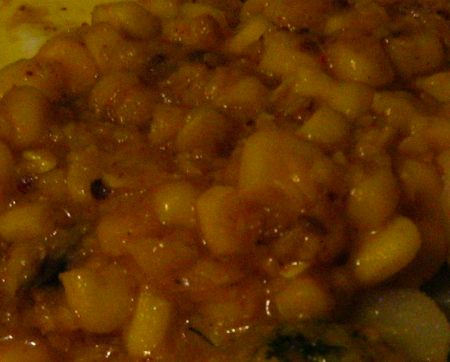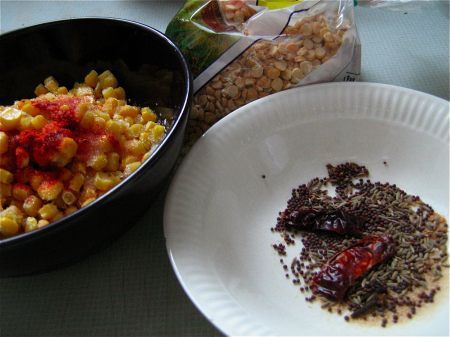I’ve been in a post-festival en lumiere detox state for a week now. Until this month I’ve never felt the need to clean out my body with a cleanse or any kind of fasting – maple syrup and lemon are not things on which I choose to subsist – but when your body is screaming at you (or refusing to move) you have no choice but to listen and to do something about it.
I think if I still ran 15km a week, worked out regularly, moved all day in a frenetic state from practice room to class to extra-curricular activity, my body could handle a little more heavy eating, but I (like the world in general) require sustainability, and that pace of life is not sustainable to me anymore. So that means my metabolism has had a chance to relax and my body does need large amounts of even healthy food. Whatever “healthy” means, I need less of it (quantity).
What does “healthy” mean?
To me it doesn’t mean a skinless, boneless chicken breast on brown rice with steamed broccoli, and it doesn’t mean daily slices of “raw” orange chocolate cheesecake even if the “healthy” dessert is made with soaked nuts, coconut oil, dates, oranges and everything deemed by “raw” foodists to be “good for you”.
To the fruitarian I met last night healthy doesn’t leafy greens or any kind of vegetable (though many of what of most people think of as vegetables are actually fruit). But to most others healthy also doesn’t mean a steady diet of crates of oranges or mangoes.
And as much as I respect other eaters who enjoy the obvious high (and apparent good health) associated with living these different ways, I am convinced that individual bodies have individual nutrition requirements, and those may change over the course of our lives. So what makes you feel energized and alive when you’re 17 years old may not be the same as when you’re 25, 35, 45, or 75.
Then there’s the issue of taste and flavour. Excluding certain foods from your diet means giving up those tastes. Does anybody else get upset when they see mock meat for vegetarians? Products that exploit cravings don’t help you to maintain your physical, political, economic, or environmental reasons, convictions or choices to give up a particular food or food group.
Giving up a flavour can also be difficult because of food memories. If you had never eaten your mother’s home-made cookies, chicken pot pie, or spaghetti and meatballs, you wouldn’t know what you were missing, but who would choose to give up those treasured memories?But then in comes the hard part of eating: balance, moderation, and addiction. If you deny your body something and it will either crave it or eventually forget, or both at different times, but once you have a little it’s sometimes hard to stop at just a taste.
Self-denial of flavour, whether associated with a memory or not, is not something I could do for the rest of my life. I don’t think I could ever be fully “raw” for a long period of time, much as I love the high that comes cleaning out your body of cooked foods (called “toxic” by raw foodists). There is a lightness and a calm that comes after even only a few days of total cleansing. That calm did not build cities, but neither did it start wars. I can almost imagine a world of cleansed people floating around blissfully, though I’m not sure how long the high lasts as I’ve never gone longer than 3 days (I’ve heard that it depends on the sustainability of the cleanse and how cleansed you really are – are you only cleansed relative to how toxic you were before, or has absolutely everything been removed from your system? The fruitarian I met described his own journey from omnivore to vegetarian to vegan to raw to fruitarian and the short-term vs. long-term highs of each, so I can only wonder).
Mostly I could never be raw because that would mean I could never toast another spice (a key part of creating flavour in Indian cooking) or long-simmer a pot of chicken with cinnamon, cloves, garlic, cayenne, onions, and ginger. I could also never be fully vegan, as that would mean no more naan bread fresh from the tandoor, and no more thick, cooling yogurt to help digest the lentils in my comforting meal or toor dal and chaat potatoes.
Toor Dal is a split pea, and can be substituted with regular yellow split peas, chana dal, or even red split peas (though the latter will cook faster, and the chana dal will cook slower than the toor dal in the recipe below). The recipe is almost fat-free, and the amount of oil that is used is required to toast the spices and make them aromatic instead of charred. Madhur Jaffrey says to use the entire corn of cob in the dish to flavour (not just the niblets), but as corn are more than a little out of season right now, I used frozen corn and it worked just fine. It’s also less messy as you don’t have to use your hands to eat the dal off the corn that’s still attached to the cob. Come summer, I’ll be trying this again. Hopefully it won’t be because my body needs a break from meat and the toxic state of food shock I am capable of putting it into.
Toor Dal
1 cup split peas (toor dal, preferably, but see above), washed and drained
1/4 tsp turmeric
1 ear of fresh corn (I used about 2 cups frozen, which is way more than 1 ear’s worth of corn. I, however, love sweet corn, and think the dish is better with more. You could also use two ears of fresh corn if you have the pot space. I also recommend doing a double batch as this freezes well)
3/4 tsp salt (the recipe calls originally for 1 1/4 tsp, but I cut it down to 1 tsp in my version and still found it very salty)
1/4 tsp-3/4 tsp cayenne (I’m fairly certain that I used 3/4 tsp)
1 tbsp lemon juice (all lemons differ, and bottled ones can be very different, so start with a scant tbsp and add more at the end if you wish)
1 tsp sugar (the original recipe calls for 2 tsp of sugar but the corn is so sweet that I think that’s too much)
1-1 1/2 tbsp sunflower or vegetable oil (you can use olive oil, but don’t let it smoke. I pour the oil into the side of a small pot so I don’t have to use as much by covering the entire surface area. Then add the spices only the oil cowering in the corner)
1/8 tsp asafetida (speaking of cleansing, this is key for helping to digest lentils, so find it whole at a specialty spice store and keep it for a long time. Grate it for each recipe)
3 whole cloves (these make all the difference in the world. Do not use ground cloves unless you have absolutely zero choice. I would even say use maybe 4 or even 5 whole cloves in this, but start with 3 and see how you feel for next time)
1/2 tsp whole cumin seeds
1/2 tsp whole brown mustard seeds
2 whole dried red chilies (you actually don’t need any more than 2, and that’s coming from me – lover of heat)
Put the dal and 5 cups of water in a large pan. The original recipe says 4 cups, but my kitchen sucks the heat out and evaporates things too quickly, so 5 (or even 6) is a safer bet – better to have a little extra water to boil off later than to burn the dal.
Bring the pot to a boil and skim the scum that rises to the top. You can also drain the dal, rinse it, and add more water if you really want to get rid of all the flatulence-causing froth, but then you need to wait for more water to boil. When the dal is boiling again (or once you’ve skimmed the scum), turn the heat to low and add the turmeric. Stir, partially cover, and simmer gently for 1 hour. You need to make sure it’s actually simmering the whole time, or you’re going to be either eating chewy, under-cooked dal, or waiting a long time for you dal to cook once you realize it has a long way to go. Don’t walk away and assume it’ll keep simmering, as I did.
1 hour later add the corn, salt, cayenne, lemon juice, and sugar. Stir and partially cover again for 10 minutes. It needs to, again, actually come back to a simmer, so if you use frozen corn like me, don’t start timing until it’s simmering.
One minute before the dal is done, heat the oil in a small pot or frying pan (collecting the oil at one side if using less oil). When it’s very hot (if you have to use olive oil add it only once the pan has heated up for a minute) add the grated asafetida, cloves, cumin, mustard seeds, and chilies to the part of the pan with the oil. As soon as the mustard seeds start to pop (just about 10 seconds of so) and the chilies darken, pour the entire contents of the frying pan into the dal.
See with rice or naan or potatoes.
This recipe supposedly serves 4-5, but it’s not meant to be eaten on its own, so steam some swiss chard or cut up some cucumber or check out some other Indian recipes for vegetable side dishes I’ve posted here. Always serve with probiotic yogurt (unless you’re vegan) to help digestion. A little fat content is also helpful for digestion, so just a little yogurt goes a long way. Not a cup. Not even a half cup is necessary. Definitely don’t use a fat-free kind, though, or you won’t understand why Indians would choose to eat it with almost every meal.



Leave a Reply